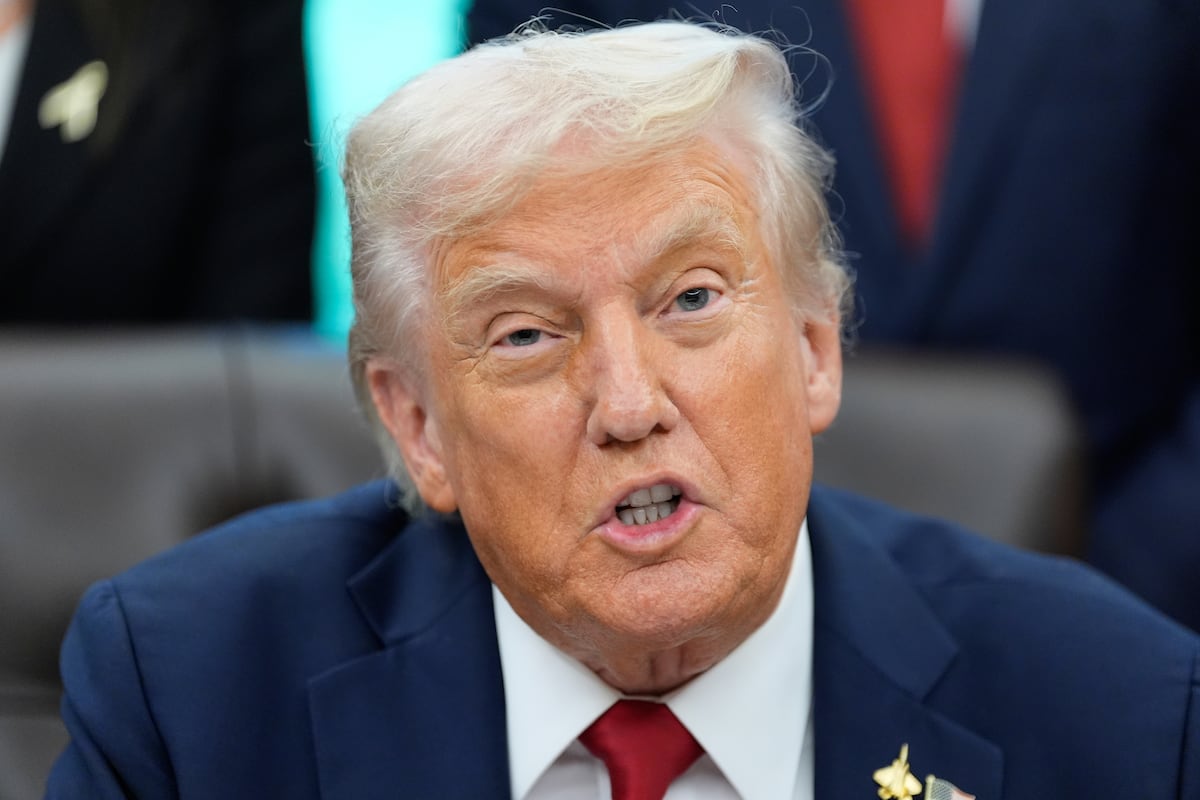Staff at the State Department’s Office of Countering Violent Extremism and Bureau of Conflict and Stabilization Operations, which led U.S. anti-violent extremism efforts, were laid off, the units shuttered, on July 11.
This dismantling of the country’s terrorism- and extremism-prevention programs began in February. That’s when staff of USAID’s Bureau of Conflict Prevention and Stabilization were put on leave.
In March, the Center for Prevention Programs and Partnerships at the Department of Homeland Security, which worked during the Biden administration to prevent terrorism with a staff of about 80 employees, laid off about 30% of its staff. Additional cuts to the center’s staff were made in June.
And on July 11, the countering violent extremism team at the U.S. Institute of Peace, a nonpartisan organization established by Congress, was laid off. The fate of the institute is pending legal cases and congressional funding.
President Donald Trump in February had called for nonstatutory components and functions of certain government entities, including the U.S. Institute of Peace, to “be eliminated to the maximum extent consistent with applicable law.”
These cuts have drastically limited the U.S. government’s terrorism prevention work. What remains of the U.S. capability to respond to terrorism rests in its military and law enforcement, which do not work on prevention. They react to terrorist events after they happen.
As a political scientist who has worked on prevention programs for USAID, the U.S. Institute for Peace, and as an evaluator of the U.S. strategy that implemented the Global Fragility Act, I believe recent Trump administration cuts to terrorism prevention programs risk setting America’s counterterrorism work back into a reactive, military approach that has proven ineffective in reducing terrorism.
Between 9/11 and 2021, the cost of the U.S. war on terrorism was $8 trillion and 900,000 deaths, according to a Brown University study. Nonetheless, terrorism has continued to expand in geographic reach, diversity and deadliness.
Though it was territorially defeated in Syria in 2019, the Islamic State – designated a designated a foreign terrorist organization by the U.S. government – has expanded globally, especially in Africa. Its nine affiliates on the continent have joined several al-Qaida-linked groups such as al-Shabab.
The Islamic State has expanded through a decentralized model of operations. It has networks of affiliates that operate semi-autonomously and exploit areas of weak governance in places such as Mali and Burkina Faso. That makes them difficult to defeat militarily.
These terrorist organizations threaten the U.S. through direct attacks, such as the ISIS-linked attack in New Orleans on Jan. 1, 2025, that killed 14 people.
These groups also disrupt the global economy, such as Houthi attacks on trade routes in the Red Sea.
To understand why terrorism and extremism continue to grow, and to examine what could be done, Congress charged the U.S. Institute of Peace in 2017 to convene the Task Force on Extremism in Fragile States.
This bipartisan task force found that while the U.S. military had battlefield successes, “after each supposed defeat, extremist groups return having grown increasingly ambitious, innovative, and deadly.”
The task force recommended prioritizing and investing in prevention efforts. Those include strengthening the ability of governments to provide social services and helping communities identify signs of conflict – and helping to provide tools to effectively respond when they see the signs.
The report contributed to the Global Fragility Act, which Trump signed in 2019 to fund $1.5 billion over five years of prevention work in places such as Libya, Mozambique and coastal West Africa.
Programs funded by the Global Fragility Act included USAID’s Research for Peace, which monitored signs of terrorism recruitment, trained residents in Côte d’Ivoire on community dialogue to resolve disputes, and worked with local leaders and media to promote peace. All programming under the act has shut down due to the elimination of prevention offices and bureaus.
The State Department issued a call for funding in July 2025 for a contractor to work on preventing terrorists from recruiting young people online. It stated: “In 2024, teenagers accounted for up to two-thirds of ISIS-linked arrests in Europe, with children as young as 11 involved in recent terrorist plots.”
In the same month, the department canceled the program due to a loss of funding.
It’s the kind of program that the now defunct Office of Countering Violent Extremism would have overseen. The government evidently recognizes the need for prevention work. But it dismantled the expertise and infrastructure required to design and manage such responses.
The work done within the prevention infrastructure wasn’t perfect. But it was highly specialized, with expertise built over 2½ decades.
Chris Bosley, a former interim director of the violence and extremism program at the U.S. Institute of Peace who was laid off in July, told me recently, “Adequate investment in prevention programs isn’t cheap, but it’s a hell of a lot cheaper than the decades of failed military action, and more effective than barbed wire – tools that come too late, cost too much, and add fuel to the very conditions that perpetuate the threats they’re meant to address.”
For now, the U.S. has lost a trove of counterterrorism expertise. And it has removed the guardrails – community engagement protocols and conflict prevention programs – that helped avoid the unintended consequences of U.S. military responses.
Without prevention efforts, we risk repeating some of the harmful outcomes of the past. Those include military abuses against civilians, prisoner radicalization in detention facilities and the loss of public trust, such as what happened in Guantanamo Bay, in Bagram, Afghanistan, and at various CIA black sites during the George W. Bush administration.
Counterterrorism prevention experts expect terrorism to worsen. Dexter Ingram, the former director of the State Department’s Office of Countering Violent Extremism who was laid off in July, told me: “It seems like we’re now going to try shooting our way out of this problem again, and it’s going to make the problem worse.”
Rebuilding a prevention-focused approach with expertise will require political will and bipartisan support.
U.S. Reps. Sara Jacobs, a Democrat from California, and Mike McCaul, a Texas Republican, have introduced a bill that would reauthorize the Global Fragility Act, extending it until 2030. It would allow the U.S. government to continue preventing conflicts, radicalization and helping unstable countries. The measure would also improve the way various government agencies collaborate to achieve these goals.
But its success hinges on securing funding and restoring or creating new offices with expert staff that can address the issues that lead to terrorism.
This analysis was developed with research contributions from Saroy Rakotoson and Liam Painter at Georgetown University.
This article is republished from The Conversation under a Creative Commons license. Read the original article.
Read the full article here








Leave a Reply